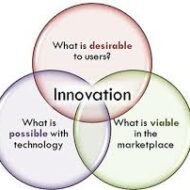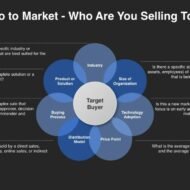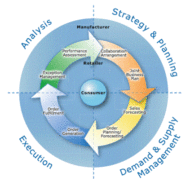Posted by Managementguru in Business Management, Marketing, Principles of Management
on Mar 4th, 2014 | 0 comments

The Realm of Product Innovation A manufacturer or a service provider, who aspires to be successful in a business market, must indulge himself in research, pertaining to consumer preference as well as the various stages of a product life cycle. This will give him a better chance to make his future decisions concerning the product and also the wisdom to evolve strategies accordingly. Developing a product and introducing it into the market demands certain amount of forethought and prudence. The first step is to study the market, to understand consumer preference as well as to gauge whether your product will be appealing to the customers existing in that market. The prerequisite for this would be market segmentation, that is to statistically estimate the demographic quotient (people belonging to different age groups and ethnic societies) of the sample population and decide on the customers whom you want to target. A product’s success depends mainly on two things: 1) Innovation-lateral thinking, by which you let loose of all your unorthodox methods and stick onto some novel ideas of marketing. 2) Customer-oriented marketing rather than product oriented. This customer oriented concept is advocated by modern marketing consultants and it has proven to be a fantastic proposition. More than the actual product, people like to know more about the values that they obtain out of that product. The secret behind success will be to hit the right note, by propagating more about the value added services that go with the product. Expectations Created by the Product When a product is introduced in a market, say, automobiles for example, since every tom, dick and harry is fond of cars and bikes and they talk a lot about it. It is looked upon by prospective customers with great expectations, which might be due to the great hype created by the manufacturer through advertisements in electronic media, papers and magazines. The product as it hits the market will instantaneously make it big, if it has the right mix of intangible and augmented benefits that make customers happy and they feel that they have bought something worth the money paid for. A luxury car is well received by the market, irrespective of the price tag that is stuck to it, just because of the value added benefits such as, delicacy, great speed, high-performance, safety, insurance and warranty. Product Pre-Launch Analysis Before launching a product, industry analysis is a must, as various similar products might exist and it comes to the question of how different and appealing your product is, for market acceptance. Even minor things can make a big difference, say, for instance, if you are able to float the cheapest car, in terms of price but with great fuel efficiency, the results are obvious. The strategy would be to introduce innovations not only in your product but also in your thinking. Best products emerge as a result of tuning in your wavelength with that of the consumers’. Product Life Cycle A product gets introduced, grows, matures, stabilises and slowly withers off, just like a human being. No man is eternal and so is a product. You may argue that some products are in the limelight for more than their share of lifetime. If you keenly observe, that would have been the result of makeover changes to the product in lieu of the change in people’s liking and analysis of market trend. Some products have a second chance to prove their mettle. They go into hibernation for a while and then re-enter when market conditions seems to be favorable. The perspective from which you look at the life cycle of a product may cast a different idea...

Posted by Managementguru in Business Management, Marketing, Principles of Management
on Mar 4th, 2014 | 0 comments

Market Research for Product Line Management Business firms, whether involved in the manufacture of goods or delivery of services, have to understand the importance of marketing research that would give a fair idea about their territory of operations and the scope for development. Let me first clarify the obvious difference between a market research and marketing research. While market research is confined to only a market which comprises of its potential and actual buyers, a marketing research delves deep into and further beyond, covering all areas of marketing including the market. Identification of Consumer Needs: Identification of consumer needs and satisfying them is vital for the emergence of a buyers market. Although firms manufacture goods that are competitive in terms of quality and price, it is the middlemen, the linking factor between the manufacturer and the wholesaler or retailer, that have a commanding grip on distribution, affecting sales volumes. Extensive marketing research will help firms to solve such problems of middlemen and distribution, to cater to the needs of the ever expanding market. Preference of People: People’s preference always changes resulting in a sea change of market conditions. In order to anticipate and meet any such changes, a firm needs to analyze the market conditions on a day to day basis. Also improving the product design helps a firm to retain its customer base. How does a firm survive in the market without knowing the elemental changes that are happening in its immediate environment? Pricing is one of the crucial factors that determine the acceptance ratio of a product or range of products. Information Source: Marketingtutor A separate department is maintained by some top corporate firms to collect relevant information about the pricing strategies of rival companies that helps them to take the market lead, by quoting competitive prices comparatively. Such secret agendas are a need of the hour to outsmart your rivals. Sales Promotion and Advertisement Campaigns: Another component of the research planning is sales promotion and advertisement campaigns. Sales promotion is solely dependent upon the sales force and the marketing manager has to play a key role in integrating their functions to bring out their strengths. The activities of the sales personnel should be oriented towards targets and a mission without a target is like travelling without knowing the destination. Information Source: BBAMANTRA When we talk about advertisements, they not only sell tangible products but also intangible things like morals, values, love etc., So, it becomes even more important for the advertisers to follow some built in standards that does not affect the ethical values of the society concerned and also they should make it a point not to make women a mere object of attraction. The market research that is a part of marketing research includes the study of the following: Market sizeMarket potentialMarket shareMarket segmentsMarket trends and seasonal trendsSales forecastingConsumer profileConsumer preferenceCompetitor analysisMeasuring the price elasticity of demand and much more. Such marketing research helps a firm to develop a comprehensive plan regarding effective training programmes, sales force management, research and development programmers and effective control mechanisms. It also facilitates efficient decision making and the operational tasks of marketing management, thereby contributing to customer satisfaction and efficiency of the...

Posted by Managementguru in Business Management, Marketing
on Mar 3rd, 2014 | 0 comments

Product Forecasting – An Analogy What is Product Forecasting: It is the science of predicting the degree of success a new product will enjoy in the marketplace. Forecasting is said to be the first and foremost step in the planning process. One of the requirements for effective long-term planning by managers is to assess the changes in technology and environmental conditions that could affect the firm. This is termed as environmental scanning which facilitates the firm to benchmark its performance as against the top industry standards. Technological forecasting involves anticipating development of new products and processes and the time taken for such kind of innovations to be accepted and absorbed in the market. External Environmental Scanning: Environmental forecasts focus on factors such as population growth, availability of resources, social and political trends that may affect the firm’s future. Business firms become more informative on, The percentage of market share for existing products of the firm Future demand for its product range Decline in sales proportions Consumer feedback about product performance Customer satisfaction Sales team performance level Pitfalls in marketing strategies Need for new product development Unidentified customer needs and so on All predictive activity is subject to error, but technological and environmental forecasting is particularly different because they often involve assessing ideas and relationship that do not exist at the time the analysis is being performed. These forecasts are best suited for predicting performance a year or two in the future. Plan of Future Course of Action: Based on forecasting, the firm decides the future course of action. Sales forecasts help the firm to decide on the volume of production for the next few months and aid in aggregate capacity planning. Labor productivity is a crucial factor in determining the success of a business environment, especially a production environment. Manpower planning is purely based on production forecasts where in, the labor hour productivity is also taken into consideration. Forecasting Techniques: In the absence of empirical data, the forecasts must be based on expert opinions. Techniques like Delphi method can be used for this purpose. A group of experts is asked to assess a particular situation, presented with the judgments of others in the group, and then asked to reevaluate their individual positions based on what they have heard. The process continues until a consensus is arrived or until it is apparent that there will be no consensus. This helps the firm to consolidate its position with respect to specific problem situations. The Delphi method has been successfully used to forecast the nature and timing of technological change. Techniques like Delphi and Brain storming also help in the process of identification of bottlenecks, the current business trend, the firm’s future prospects, range of estimates for the desired breakthroughs etc. Although the pattern of a business cycle or a product cycle for the most part, follows a fairly predictable pattern, the firm cannot overlook probabilities, upon which the firm has to capitalize on. The firm has to become alert and employ some innovations at that point of time, when the market becomes saturated. Or else, the rate of growth declines and the firm has to decide whether to continue with the operations which calls for additional investment or close down the...






